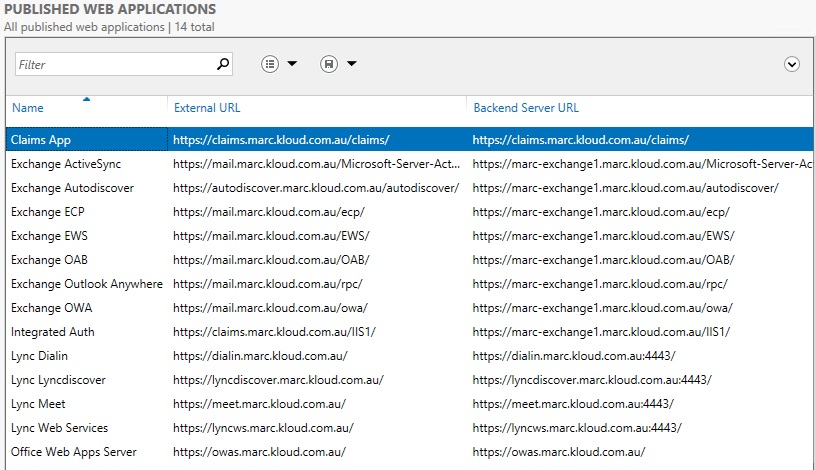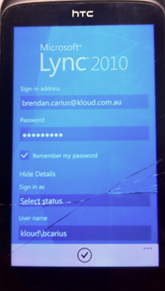
Publish Lync 2013 with 2012 R2 Preview Web Application Proxy
I discussed the new Windows 2012 R2 Preview Web Application Proxy (WAP) remote access role in a previous post Windows 2012 R2 Preview Web Application Proxy – Exchange 2013 Publishing Tests. I showed how to publish Exchange 2013 (except for Outlook Anywhere which isn’t working) and a claims based application.
In this post I am going to cover:
- how to publish (reverse proxy) Lync 2013 and Office Web Apps Server 2013 (OWAS) using the Web Application Proxy
- why the Office Web Apps Server published URLs must be the same
- fix to make Lync mobile work (updated 19 July 2013 with information about Windows Phone 8 SNI support)
- the solution to a problem I had testing this on Azure IaaS Virtual Machines
Publishing Lync Applications
Lync has a few different namespaces that need to be published:
- Lync External Web Services (which includes the Lync Web App and Lync Scheduler)
- Lync meeting join
- Lync dialin page
- Lyncdiscover for client autodiscover
- Office Web Apps Server for PowerPoint sharing
Lync applications cannot use Preauthentication and have to use Pass-through which lets the backend server provide authentication.… [Keep reading] “Publish Lync 2013 with 2012 R2 Preview Web Application Proxy”

